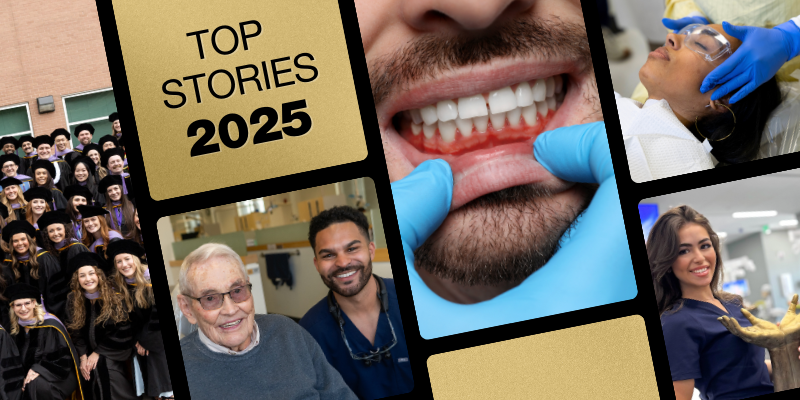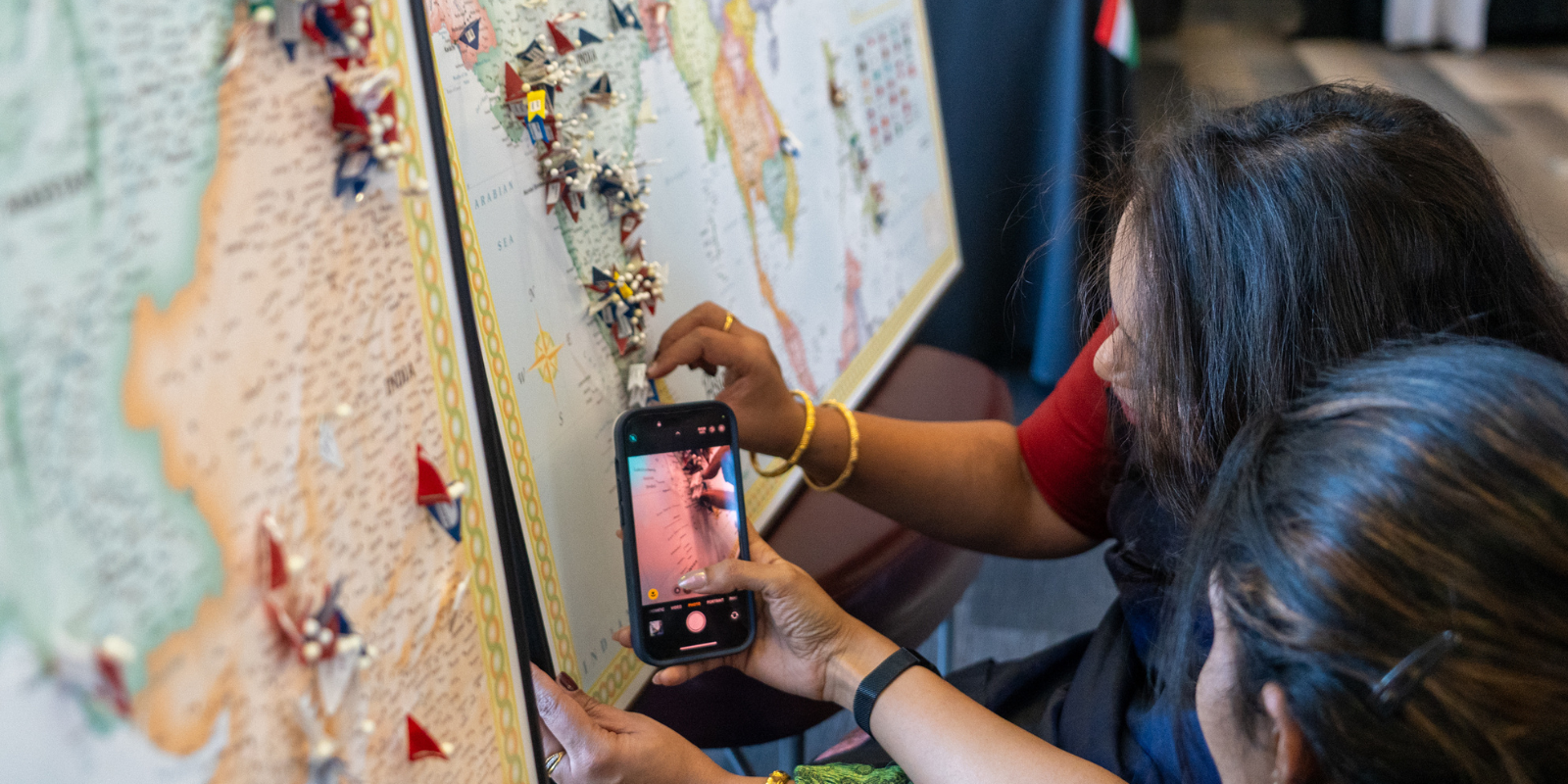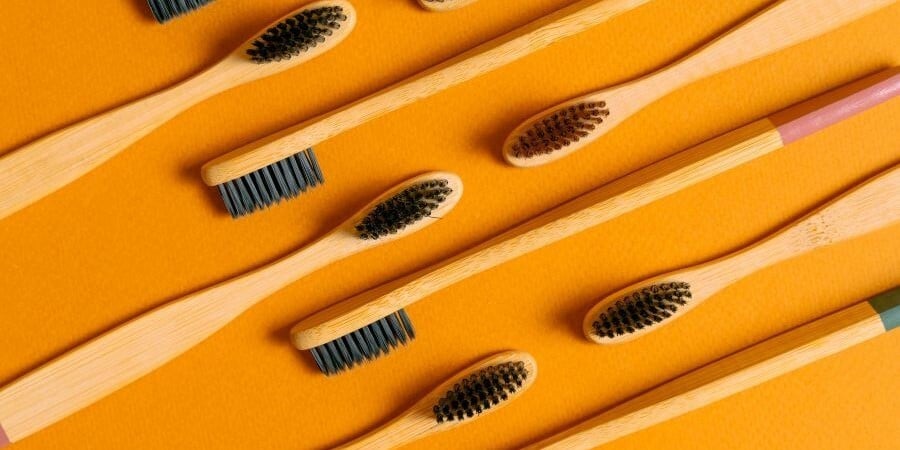Bruce Jackson, a retired Microsoft engineer and patient at the University of Colorado School of Dental Medicine’s (CU SDM) Senior & Special Care Clinic, is battling a progressive neuromuscular disease that has completely changed his life. He’s convinced it all started with a cracked tooth.
"I used to bike to work every day; I was a long-distance runner," Jackson said. "In 2009, I cracked a tooth, and my dentist at the time gave me penicillin for the infection. When I got home, I had a pretty serious reaction, but I thought it was one of my food allergies, so I kept taking the antibiotic and it kept getting worse. It’s been a slow descent since then."
Jackson’s current working diagnoses are myasthenia gravis (MG) and chronic inflammatory demyelinating polyneuropathy (CIDP). Some pulmonologists have told him he has classic amyotrophic lateral sclerosis (ALS) given his breathing and motor issues, but he kiddingly said, "They are downers."
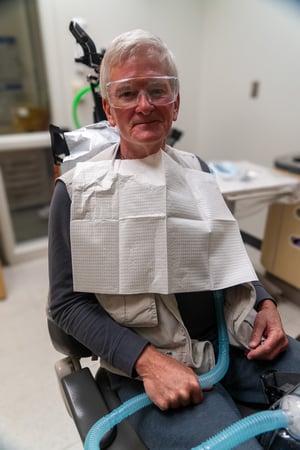
CU SDM Senior & Special Care Clinic patient Bruce Jackson carefully places his medical equipment underneath the dental bib before treatment. |
Initially, Jackson thought he wouldn’t need much dental care because he now has a feeding tube and doesn’t eat much orally, but he watched a recent video from the Global Tracheostomy Collaborative, which prompted him to think about how dental problems could impact his tracheostomy and lungs. At the CU SDM Senior & Special Care Clinic, he can get regular cleanings to prevent infection that could compromise his overall health. He said, "It's great to have your team helping me with dental care, and to have y'all be an important part of my larger health team."
Through Jackson’s story and countless others, we know that oral health is integral to overall health and quality of life. The National Institutes of Health noted one of the major takeaways from a significant 2023 report, Oral Health in America: Advances and Challenges: "Oral and medical conditions often share common risk factors, and just as medical conditions and their treatments can influence oral health, so can oral conditions and their treatments affect other health issues."
Associate Professor and Assistant Director of the Advanced Clinical Training and Service (ACTS) Program Sarah Dirks, DDS, is Jackson’s faculty provider who oversees the work done by dental students. She said, "Helping Mr. Jackson with his oral health may seem like a small thing, however sometimes I think we forget how important it really is. Having healthy teeth obviously helps us chew food, but consider the profound emotional, social, and spiritual routines and rituals that surround food and meals. If we can play even a small part in keeping Mr. Jackson’s oral health in shape, that will benefit his overall health and wellbeing too, which is a very special honor."
Jackson’s student providers were also quick to notice his optimism. Isaura Cirillo, BDS, DDS (ISP ’23), said, "He is always looking on the bright side. He is a very happy patient and likes to talk. He is brilliant and interesting; I always learn something from him. It is a good case to learn that you do not need to be scared of seeing patients with an extensive health history." Jackson explained his condition in terms of electrical wiring: "You have the power source – the brain – and you have the light you’re trying to turn on – the muscle. But the wiring in between is what’s broken. My brain will tell my leg to move, but the leg doesn’t move, so I fall." After several falls, a few cracked ribs, a collapsed lung, and a tracheostomy, Jackson now minimizes his walking by using a power wheelchair to get around.
Diagnoses lead to innovation
The only problem was that the chair didn’t come with proximity sensors, and with his limited neck mobility, he couldn’t tell how close he was to other people or objects. Existing sensors on the market cost upwards of $5,000, so Jackson decided to tap into his engineering background and do it himself. The total for the parts was less than $20.
Jackson then wrote the code to send proximity distances to his phone via Bluetooth. It connects to his hearing aids and sends three different tones at three different frequencies. "That's where the heavy lifting is done,” he said. "I know based on the tone and frequency how close I am to something and on which side. Now I can keep from rolling over my neighbors in the retirement center!"
Because there’s an existing patent, Jackson can’t sell the code, but that’s not what’s important to him. He contacted the ALS Association, wheelchair manufacturers and other organizations to offer the open-source code, kit and instructions to put it all together. In the future, Jackson hopes to see proximity sensors included on wheelchairs as standard equipment.
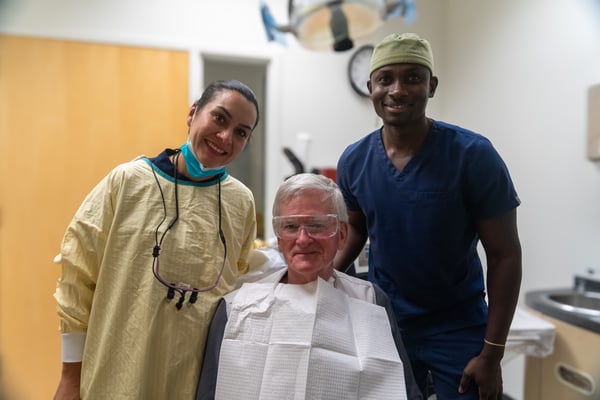
Left to right: Isaura Cirillo, BDS, DDS (ISP ’23), Bruce Jackson, and Nana Adu Adjei (DDS ’24). |
Nana Adu Adjei (DDS ’24), one of Jackson's student providers, said, “Mr. Jackson is one of the smartest and most relatable people I have ever had the pleasure of interacting with."
"I have come to understand a little bit of the struggle some of our patients have when finding a dental home, especially when other providers are hesitant to provide treatment," Adjei said. "It is especially important because sometimes the patients requiring our services the most are the ones most likely to be turned away from other providers due to their complexity."
CU SDM Patient Experience Program Director Collette Kuhfuss had a unique connection with Jackson. She said, “When he told me his condition was believed to be neurological in origin, my hair stood on end and my heart fell. My late husband died of ALS nine years ago and I knew the obstacles Mr. Jackson was facing. I told him about my husband, and we talked at length about his situation and about his invention for his wheelchair. I was so inspired by his attitude and intellect that I knew his was a story worth sharing.”
Jackson was excited to become a patient at the dental school.
“You have full resources. You can do so much more than a regular dental office because you have all the different clinics and specialties right here. It’s also nice to know that I’m being treated with not just state-of-the-art learning but also equipment. You always have the latest and greatest because you’re teaching new dentists.”
- Bruce Jackson, CU School of Dental Medicine patient
He added, “My daughter is a physician, so I’m passionate about helping the next generation of providers. It's really kind of fun.”
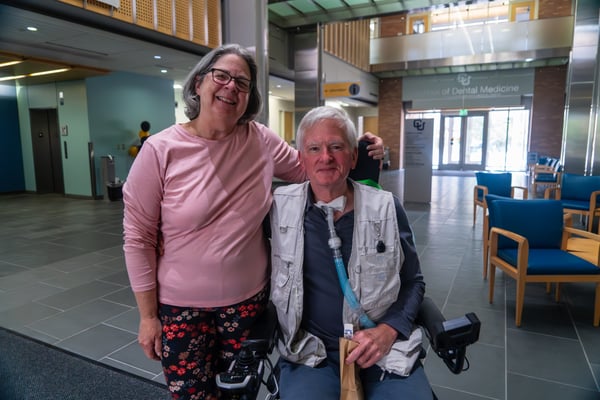
Bruce Jackson and his wife, Susan, get ready to head home after a successful appointment at the CU SDM Senior & Special Care Clinic. |

